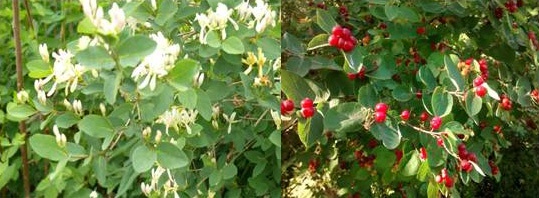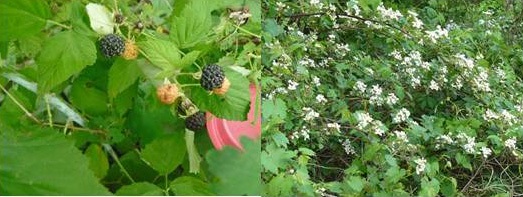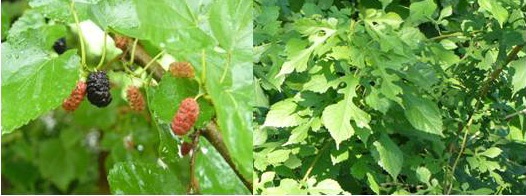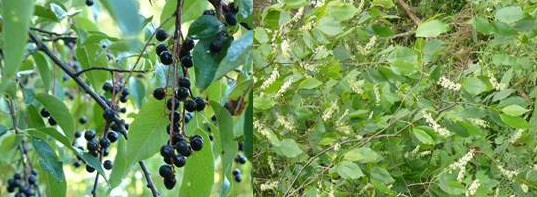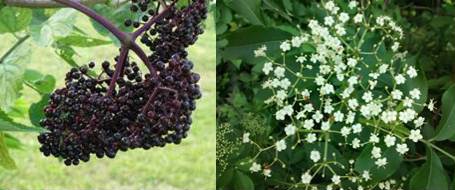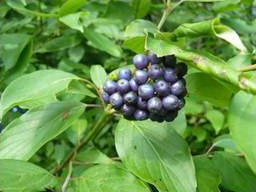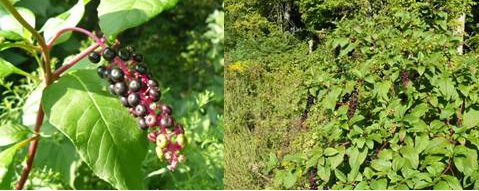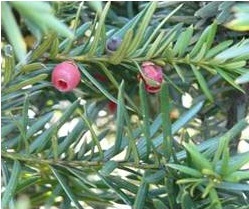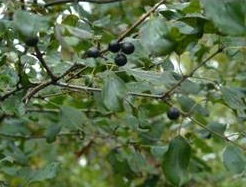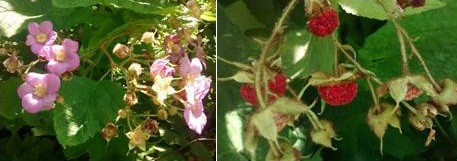Wild hosts of spotted wing drosophila
Learn to identify some of the common wild hosts for the spotted wing drosophila.
Introduction
Spotted wing drosophila (Drosophila suzukii), or SWD, is an invasive insect pest that has the potential to damage many fruit crops, including berries and other soft fruit. SWD is a matter of concern for growers because the flies lay their eggs in fruit and larvae develop inside the fruit, making it unmarketable.
In addition to attacking crops, SWD feeds on many kinds of wild fruit found in the landscape. These wild hosts are often present in wooded area near fields or in hedgerows between fields. SWD can lay eggs in wild hosts that produce fruit early in the season, and then spread into crops when the wild hosts are done fruiting.
It is important to recognize these wild hosts so that you can monitor for SWD on your farm. Place traps in wild hosts in early spring. Be aware that the first SWD infestations on your farm will probably be adjacent to these wild hosts, so look for crop damage in these areas first.
Identification of wild hosts
Some of the most common wild hosts of SWD you may encounter are listed below. This is not a complete list; information on other wild hosts can be found in the links listed under More information below.
Honeysuckle (Lonicera spp.)
Originally introduced as an ornamental, this bush is abundant along woods and lanes and railway tracks. It is one of the earliest wild fruits in the area. Research from New York suggests that more SWD per gram of fruit emerge from wild honeysuckle than from any other fruit. Produces fruit mid-June to mid-September.
Brambles (Rubus spp.)
Wild raspberry and blackberry species can be found in hedgerows and uncultivated areas near fields. They produce fruit from early June to late September. Wild raspberries are often the first place we find SWD larvae in fruit.
Mulberry (Morus rubra)
Mulberry trees are mostly found in southwestern Ontario and other areas where Carolinian forest species thrive. They fruit in late June and early July and are potentially another early season host for SWD.
Pin cherry (Prunus pensylvanica)
Hardwood deciduous trees with fruit ripening in August.
Elderberry (Sambucus spp.)
This bush with very showy white flowers blooms in July and fruits in August. The fruit is highly attractive to SWD.
Dogwood (Cornus spp.)
There are many different types of dogwood, including those with blue berries and white berries. We have found SWD in both, which fruit in August and late summer.
Pokeweed (Phytolacca americana)
This tall succulent weed with fuchsia coloured stems produces dark berries in mid- to late August and is a good late season host for SWD.
Buckthorn (Rhamnus cathartica)
A thorny bush that grows in hedgerows, field edges, and unmanaged areas. Buckthorn is also a host for soybean aphid and brown marmorated stink bug. Buckthorn is a noxious weed species and should be removed from field edges where possible. Flowers in May and June, with berries ripening in early August.
Yew (Taxus spp.)
A coniferous shrub or tree with red berries and small seed cones.
Purple flowering raspberry (Rubus odoratus)
This ornamental raspberry species is a shrub 1-2 m in height with fragrant purple flowers. The large, flat raspberry-like fruit matures in midsummer to early autumn.
Management strategies
Since crops adjacent to wild hosts are at highest risk for early damage, it is important to be aware of nearby wild hosts that could support build-up of SWD populations . Do not attempt to spray wild hosts with an insecticide. This futile exercise could do more harm than good (since wild hosts are also an important refuge for beneficial insects, insect predators and other pollinators) and it is also illegal. As well, because wild hosts for SWD are so abundant we do not think it is practical to try and remove them from your farm. However, it is probably beneficial to control wild brambles around the edges of your fruit crops.
Be aware of the timing of fruiting of wild hosts. SWD may move into crops when wild hosts are done fruiting, so this is a key time to focus on monitoring and pesticide application on crops. SWD has many wild hosts where it probably completes one or more generations. The role of these wild hosts is not completely understood. We expect that some of these hosts support early generations of SWD which then migrate to susceptible fruit crops. On the other hand, wild hosts often provide habitat for beneficial insects that help to control crop pests, including SWD.
More information on wild hosts of SWD
- Non-crop host plants of the spotted wing drosophila in North America (Oregon State University)
- Controlling weed hosts of spotted wing drosophila (OMAFRA)
- Buckthorn species are wild hosts of spotted wing drosophila (OMAFRA)
